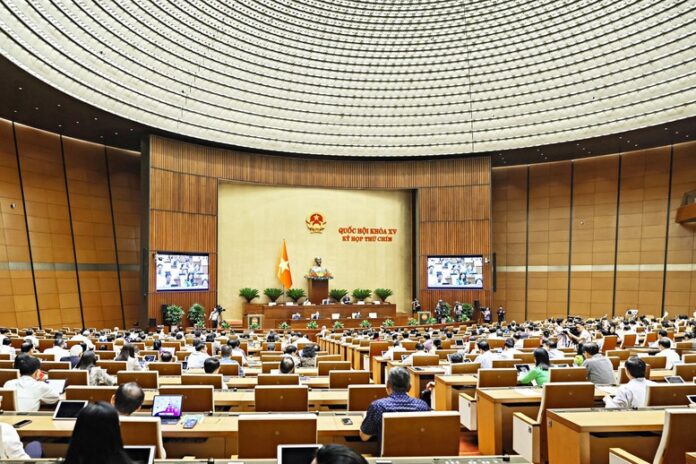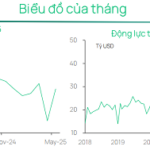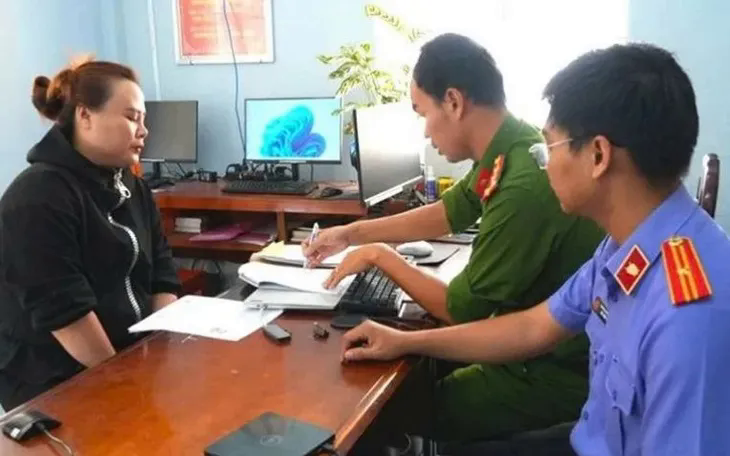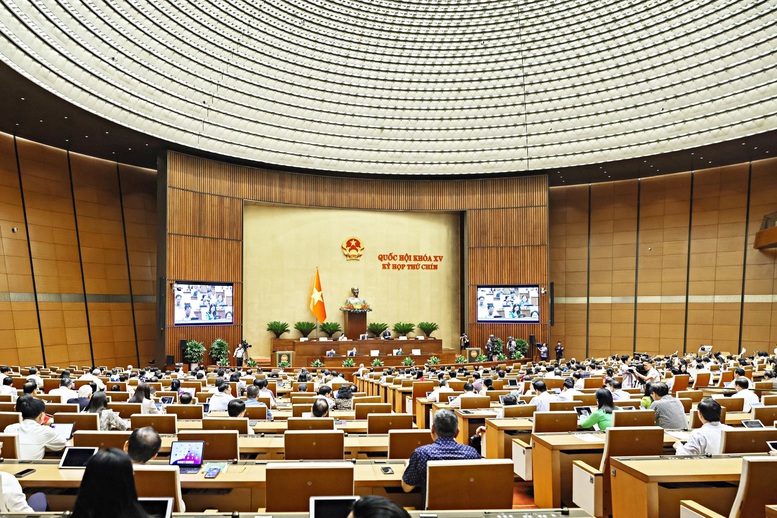
With an overwhelming majority of 461 out of 465 delegates voting in favor, the 15th National Assembly has passed a resolution on the rearrangement of provincial-level administrative units in 2025.
Every citizen needs to understand that the merger of provincial-level administrative units is not about erasing local identities but about elevating them. It is not about erasing history but about writing a new chapter on a larger and grander scale. This is the time for the entire population and the Communist Party to unite and take action for the benefit of the nation, for a more streamlined, robust, and powerful Vietnam in the 21st century.
Why the Need for Merger?
Vietnam used to have 63 provinces and cities, an unusually high number given the country’s population and land area. This administrative structure was formed during a specific historical context but has now revealed its limitations and become a significant hindrance to effective state management and national productivity.
Many provinces are too small to develop independently, with populations below one million or even just 300-400 thousand, low budget revenues, fragmented infrastructure, and high dependence on the central government’s budget.
The administrative apparatus is spread too thin, with each province having a full range of departments, sectors, and branches, resulting in functional overlaps, redundant tasks, and ever-increasing administrative costs.
Moreover, rigid administrative boundaries are seriously impeding the organization of regional planning, the development of inter-provincial infrastructure, and the optimization of value chains within economic spaces.
Meanwhile, Vietnam is entering a phase of in-depth development, where growth can no longer rely on resource exploitation or cheap labor. Instead, it must be driven by productivity, innovation, digital transformation, and efficient regional linkage.
These goals require administrative units to be of sufficient scale to facilitate long-term planning, absorb strategic investments, organize spatial development, and coordinate capital flows, labor movements, and technology transfers across regional boundaries.
The current small-scale and fragmented administrative model is no longer adequate to serve these new development strategies. Merging provinces is a way to redesign these units to match the demands of our times.
Now, more than ever, the conditions are ripe for action. Politically, Resolution 60-NQ/TW has provided clear guidance: administrative units must be large and strong enough, and the situation of weak and dependent provinces must not be sustained. Legally, the National Assembly is finalizing its decision. Socially, the belief in and expectation for reform are high: citizens long for better public services, businesses desire simpler procedures, fewer bureaucratic layers, and a more transparent investment environment. Political and social consensus has been reached. If we do not act now, this historical opportunity will pass, and our country will continue to be held back by an administrative design that no longer fits our new development aspirations.
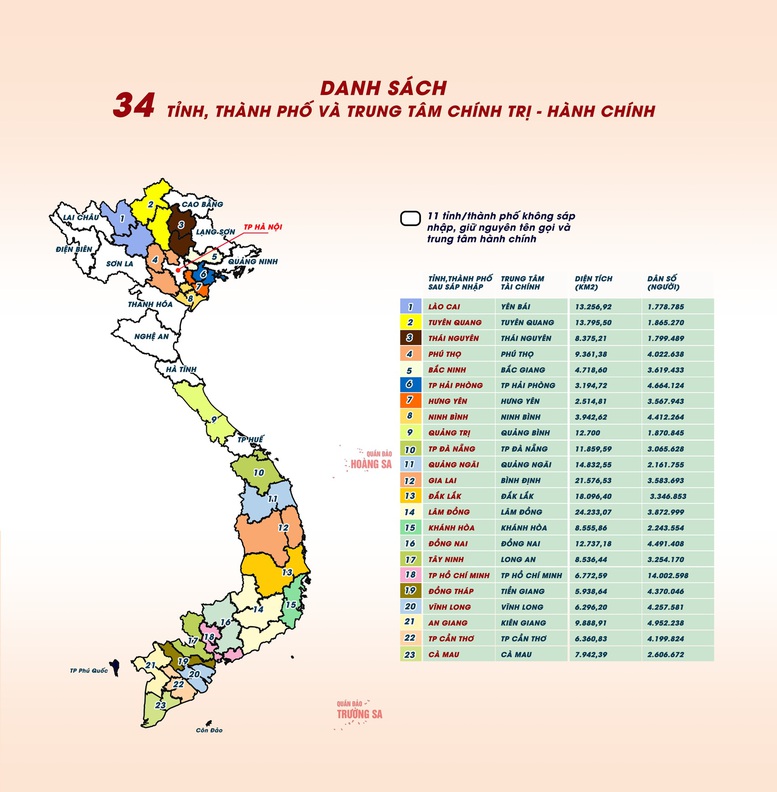
Benefits of Reducing to 34 Localities
The merger of provinces is not just a simple administrative reform but a powerful lever to create administrative units of sufficient scale and connectivity for development.
First, it is a necessary condition for forming new growth poles on the regional development map. The new localities will create a seamless development space between central urban areas, coastal regions, plains, and mountainous areas, thereby connecting the production-logistics-consumption-export value chain comprehensively. For example, Can Tho (formerly) had a GRDP of around VND 140,000 billion (in 2023), but by merging with two neighboring provinces, the total GRDP could exceed VND 250,000 billion, and the population could be over 3.5 million, equivalent to a mid-range industrial province in Thailand.
Second, reducing the number of provinces from 63 to 34 will lead to a comprehensive restructuring of the administrative apparatus, resulting in a more streamlined structure and significant operational cost savings. Previously, each province had an average of 20-22 provincial-level departments and sectors. According to estimates by some experts, this streamlining could save up to trillions of VND annually in salaries, regular expenses, and investment in office buildings. More importantly, these saved resources can be reinvested in infrastructure, education, healthcare, and digital transformation—areas with far-reaching impacts on social productivity.
Third, larger provinces will be better equipped to undertake systematic regional planning, implement effective economic policies, and enhance their competitiveness in attracting investments. According to the Provincial Competitiveness Index (PCI) in 2024, provinces capable of inter-regional coordination, such as Quang Ninh, Hai Phong, and Long An, consistently rank among the top performers. In contrast, smaller provinces with limited connectivity and challenging regional planning tend to lag. Larger provinces have an advantage in negotiating with strategic investors and are more attractive to transnational corporations that require a certain market scale and adequate infrastructure.
Fourth, mergers create opportunities for more efficient use of the budget and increased productivity in public investment. A study published in SAGE Journals in 2021 suggests that for every 1% increase in public investment spending, GRDP can potentially increase by approximately 0.196% if allocated efficiently. Maintaining numerous small provinces leads to budget dispersion, scattered investments, and low efficiency. By consolidating, projects will be more carefully selected, capital will be concentrated and better managed, thereby enhancing the effectiveness of public spending.
Fifth, larger provinces have a distinct advantage in organizing regional development and coordinating inter-provincial infrastructure. Currently, traveling the 40 km distance between Ho Chi Minh City and Binh Duong Province can take nearly two hours during peak hours due to the lack of efficient inter-provincial infrastructure planning. Coordination between provinces in transportation, logistics, and urban drainage planning is often loose and hindered by administrative boundaries. With the merger, many infrastructure projects will no longer be “fragmented” by geographical boundaries, leading to improved governance, harmonized planning, and more efficient utilization of resources.
Finally, merging provinces is an effective tool to promote balanced development across regions. Connecting mountainous provinces like Kon Tum and Gia Lai with coastal provinces like Quang Ngai and Binh Dinh will open up opportunities for cross-regional logistics corridors, green-cultural-ecological tourism belts, and high-value-added agro-forestry processing industries. This will not only enhance regional linkage but also gradually narrow the development gap between different areas in the country, a core objective of sustainable and inclusive development policies.

Merging provinces is also an effective tool to promote balanced development across regions.
Implementation Requires Synchronization and Systematization
The merger of provinces is not merely a technical decision but a strategic political action, demonstrating the Communist Party’s reform capacity, under the leadership of General Secretary To Lam, and the development vision of the National Assembly and the Government, aligned with the nation’s aspirations for progress. However, to ensure a swift yet stable transition, the implementation process must be systematic, synchronized, and well-prepared.
First, the administrative apparatus must be reorganized towards a more streamlined yet effective structure. The planning of agencies, arrangement of offices, allocation of personnel, and handling of redundant personnel must be transparent, equitable, and socially stable.
Second, the implementation roadmap must be clear and feasible. The short timeframe demands resolute central leadership and serious local engagement.
Third, social communication must be proactively led. It should be clarified that the merger aims to create administrative units of sufficient scale to foster stronger and more sustainable development.
Finally, digital transformation should be at the core of this reorganization process. Digital systems, e-governance platforms, and smart monitoring tools will enable the new administrative structure to operate efficiently, transparently, and seamlessly, ensuring that the change brings about improved governance capabilities rather than merely geographical adjustments.
Uniting for the Nation’s Progress
The success of this reform will testify to the Communist Party’s, National Assembly’s, and Government’s capacity for innovation and bold action, demonstrating their willingness to break free from conventional paths and confront obstacles head-on, paving the way for a more sustainable and comprehensive future. However, for this reform to truly take root, it requires the unity, synchrony, and concerted efforts of the entire political system, from the central to local levels, and the support and participation of every cadre, party member, and citizen.
The Constitution Amendment Passes in Congress, County-Level Operations Halt from July 1st
With the recent resolution passed by the National Assembly, the Prime Minister will now directly appoint the chairman and vice-chairman of the People’s Committees in the provinces and centrally-run cities formed after the reorganization.
“A Call for Passion: Truong Gia Binh on the Drive Needed to Succeed in Semiconductor Industry”
“Semiconductors are the staple food of the digital era, much like rice is to South Korea, and AI is the new strategic energy source, akin to oil in the future.”
“HDBank and PV Power Sign VND2,000 Billion Credit Limit Agreement: A Step Towards Sustainable Energy Transition.”
“Forging ahead with its commitment to green finance and sustainable development, on June 11, 2025, HDBank (HOSE: HDB), a prominent commercial bank in Vietnam, inked a significant credit agreement with PV Power, a foremost electricity producer under the umbrella of Petrovietnam. The agreement comprised a credit limit of VND 2,000 billion, marking a pivotal step in HDBank’s journey toward fostering environmentally conscious initiatives.”

